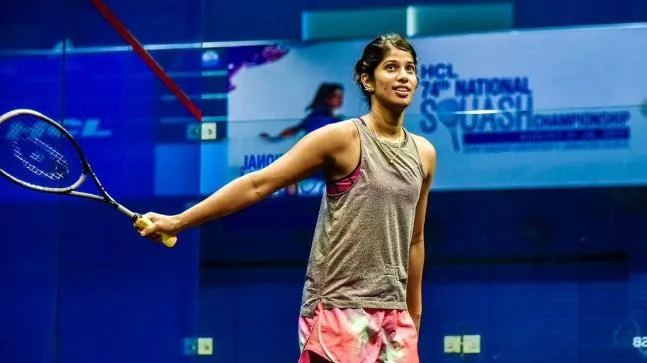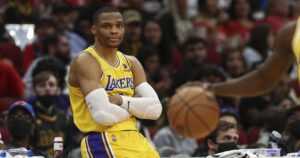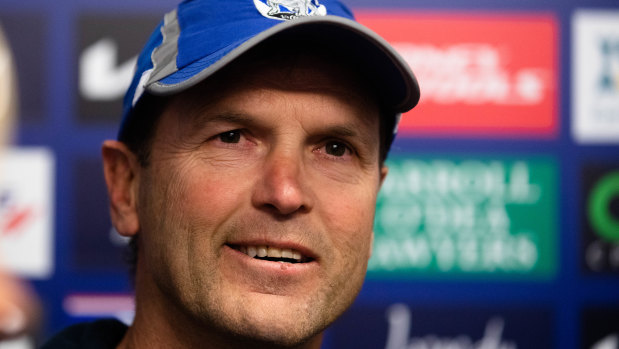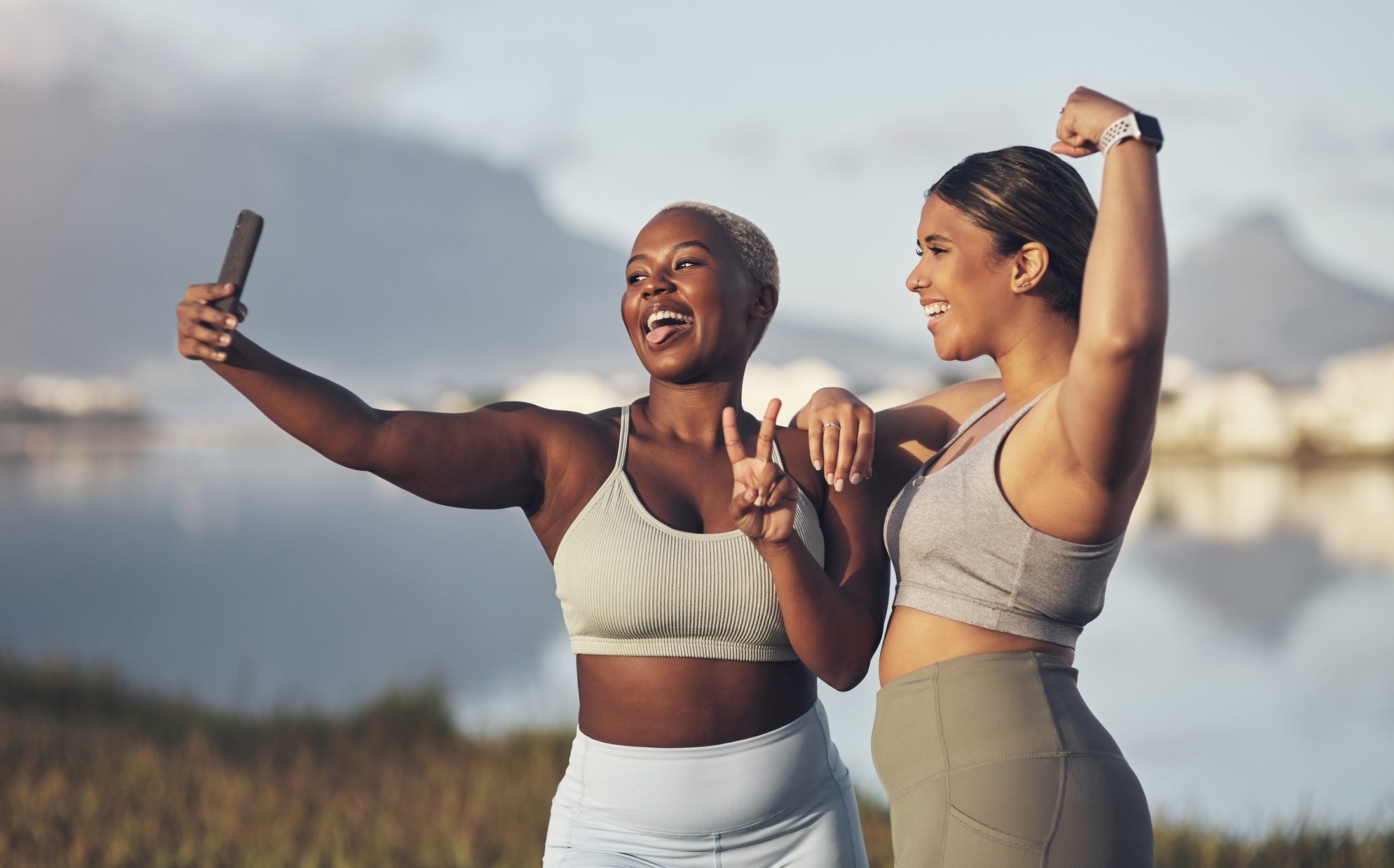Annice Lyn takes us behind the scenes on the life of a photojournalist
Celebrated documentary and sports photographer Annice Lyn shares her experience covering the recent Beijing Winter Olympics equipped with the latest MacBook Pro.
Behind every photograph taken — a breathtaking one to say the least —it is more than just one simple click. While a photographer would rather take the back seat and let the photographs do the talking, they oftentimes don’t talk about the process of getting there — to that exact moment of the shot.
The camera plays an important role, of course, but it is also about the understanding of the situation, the sense of place and the post-production that would make or break a photograph. In the eyes of renowned photojournalist Annice Lyn, it is about capturing a moment that would spark conversations (or controversies).
“There’s no ‘perfect’ picture,” she opens. “The biggest achievement, for me, would be taking an important picture that holds conversations together, be it good or bad — it doesn’t matter. Sometimes, you’ll see people liking or hating the work that we do. And that’s something that we gravitate towards — to create art or a photograph that works as a tool to inform, reform and impact people.”
Through our conversation, it is clear that Annice is driven by one thing — sheer passion. Her narrative is never a straight road but one that splits in many directions. But that is the beauty of her photographs — to have the ability to tell stories and stir emotions through one still image. It’s powerful.

The multi-hyphenated photographer who has a background in architecture and also a former national figure skater confides that the role of a documentary and sports photographer is not an easy one. “I quickly realised that my job is quite physically and mentally demanding,” she says, adding how Muay Thai helps her cope with the toughest situations.
“Tokyo was my first Summer Olympics. I foresaw it would be very physically demanding. And I think the mental demand comes with the lack of sleep and all of that combined,” she adds. “But Beijing was 10 times harder because it’s the same things applied plus layers and layers of clothes. And with the way everything needs to be airtight, you need to be very smart in terms of what you have with you.”
She recalls going up to the mountain to shoot Malaysian Alpine skier Jeffrey Webb. Having to wear two layers with loads to carry, she stresses how hard the experience would be for even the most experienced photographer. “By Day 5, our knuckles were all bleeding because it was so dry. Some of us, the first-timers, we use gloves, but it’s hard to really plan in such situations. Having our nails and feet turning purple — I think that was hard to deal with as well.”
Blood and pain aside, she has her camera on hand and a MacBook Pro in her grasp to capture some of the most iconic moments in history. Through her lenses, it is more than just a picture but a story beyond description. We sit down with her to talk about her recent experience covering the Beijing Winter Olympics, her most memorable moments (and life lessons) as a documentary and sports photographer, as well as how the latest MacBook Pro has helped her work exponentially.

What got you into the kaleidoscopic world of documentary and sports photography in the first place?
I was raised by two parents who are social workers, who up to this day, devote their lives to social development. They work towards developing homes for the aged and children — it’s called Rumah Charis. Growing up, I have more ‘grandparents’ than I could count. While my parents were trying to piece together everybody’s lives, I started to photograph the old folks, as well as the children.
From there, I developed documentaries because I would be photographing them and print their photos out for donations. When it comes to sports, it’s just because I was a former national figure skater.

How do you actually prepare yourself before a very arduous assignment like the Beijing Winter Olympics?
In sports photography especially, you are given a window of time to prepare and plan before covering the shoot. It doesn’t matter if its the Olympics or the Malaysian football league or any badminton league per se. I think first and foremost, the most important thing is your photo position. These are the things that a lot of people didn’t know — whether you’re a professional or not, squatting down or hiding or quietly standing up.
Coming from an architecture background, I like to see the floor plan first. The floor plan shows how big the location is and understanding the venue helps you to be aware of the surrounding — knowing where the safety emergency exits are, where the toilets are located, where do I come out from the media tribune, and even where the concession is. It helps with being efficient with your time at the event.
You also need to be familiar with the exact weight that you’re carrying. Before the assignment, I’d weight everything including the MacBook, how many camera bodies I’ll be carrying, the lenses and my bag. Then, I’ll go to the gym and get use to the weight with dumbbells. I’d also build my stamina from there, knowing how the weight, say 18kg, feels like in the span of, let’s say, 10 hours.
How was the experience as a photographer, covering such a large event like the Olympics?
I think it’s definitely very stressful, but it also comes with a sense of pride and responsibility because you are covering people who worked their entire life for that one moment. It could be mere three minutes of their life. So we actually have three minutes to capture a piece of history at that point of time and immortalise their hard work so that the story carries on.

Do you like to be in control with everything around you, especially when it comes to work?
After a few experiences, I would say we can only prepare so much. We need some space to allow for chaos and problem-solving. This is something I’ve had to learn, because the last time when I first started out, if it doesn’t work out in the first place, I don’t have a plan B. But now, if Plan A doesn’t work out, I’m prepared with the right headspace to pivot and adapt.
Speaking of the latest MacBook Pro, would you say that the MacBook Pro has been very reliable to have for your work all these while?
I had the luxury to have a MacBook Pro (15-inch) during my final year in architecture school and it was a game changer. So it ran AutoSketch, SketchUp, Lumion and Photoshop all at one. And it never crashed. So, after that, coming to the 13-inch MacBook Pro, it was very portable, and I quickly realised that as a photojournalist, we are not trying to stand out in the streets — the MacBook Pro 13 can be easily concealed, especially for me.
At Beijing, we were running a lot and I would be holding my camera bag, and my other bag while holding the laptop. And I’d be hurrying to the bus In the middle of the cold weather without globes. So it is very important to ensure great portability and flexibility when you’re always on the go.

How do you take care of your MacBook Pro?
I really sayang my MacBook Pro. I often buy black covers because I know that the harsh conditions of my working environment might damage it. Make sure that it fits nicely inside the bag as well.
You have the latest MacBook Pro with you throughout your time in Beijing. What are the features of the MacBook Pro that you actually love the most?
I think the SD card slot really helps a lot. From my past experience in Tokyo, there was a day where I actually forget the MacBook Pro. Luckily, my camera has WiFi. It was during the Aaron Chia and Soh Woon Yik’s badminton match where they won bronze. I thought, “I’m dead”.
But this time, the new MacBook Pro really helps to deliver even better and faster execution because of the SD card slot. In between shots, you have about three minutes of turnover time, and I am able to switch the SD cards around. It also means I could hold my camera right here, have two functioning SD cards — take pictures and edit at the same time. The golden rule as a photographer is to shoot and compose it, and frame it right in the camera to have minimal edits. So I think with the SD card slot, it is a game-changer to my performance as a photographer.
How different is the latest MacBook Pro?
When compared to the previous MacBook and its performance, I would say the difference is evident. When I was running the Adobe Lightroom, the moment I hit ‘Export’, nothing can be moved because if I move, it would disrupt the process. This time, on ground, the moment I hit ‘Command+Shift+Export”, I am still able to continue to edit. So I can easily multitask.
Time and speed are key to delivering your assignments fast and efficiently. I would say the most interesting part of the performance is there is no ‘rainbow of doom’ — that colourful ball. Every time it comes out, I would be really scared but the turnover rate for the latest device is super fast; and it helps tremendously.

Let’s talk about the entire iOS ecosystem involving the MacBook Pro and other connecting gadgets.
I use a lot of AirDrop especially when it comes to transferring the files from MacBook to my phone because knowing that even thought I deliver my job, I also wanted to take this time at the Olympics to really showcase my work on my social media platforms as well. So compared to Tokyo, I feel like I shared more of my work this time at Beijing. It is simply because of the seamless connectivity and speed that enable me to do so.
Can you also share other standout features on the iOS that really work for you?
Aside from AirDrop (who doesn’t love the AirDrop), another thing I like on the MacOS Monterey is the ‘Focus’ feature. For me, I would get distracted when messages come in while I work. Sometimes I put on ‘Sleep’ when it comes to work so that there’s nothing interfering with your work.
I think all of these seamless features coexist with each other. A lot of people would say that the iPhone is a supporting role, but I think both the MacBook Pro and the iPhone are actually stars on their own. I must say though that the Retina XDR display on both the latest MacBook Pro and iPhone also allows me to view the minutest of details.
Usually during figure skating, when they jump, I can see them jumping. But this time, I am able to see everything from the drops of sweat, and strings of hair that I can actually edit out. This is seriously helpful with the work that I do.
What about its battery life?
In comparison to my previous MacBook, the latest MacBook Pro is definitely a lifesaver. Speaking from a personal experience, and something I can really vouch for, there was a time where I couldn’t find any plug points anywhere where I was stations and both sides were full of photographers. By the time I edited and filed my assignments, the battery was at 5% and still it worked out fine till the very last minute. I know for sure that I can trust it to pull through for me even at the eleventh hour.
At the end of the day, as photographers, our deliverables are of utmost importance. I also noticed most of the photographers on-ground at the recent Beijing Winter Olympics were using the MacBook Pro — and that says something.
As a hustler, what have been your biggest life achievements?
I had this dream last year that I really hope that by the time I turn 30 years old, I would hit my third Olympics. And that happened in February 2022, so that’s really nice. I think aside from that, my biggest achievement would be taking an important picture that holds conversation together, be it good or bad — it doesn’t matter. That’s one thing I learned from other artists as well.
Last year, the shots with Red Hongyi for TIME Magazine, you’ll see people liking it or hating it. And that’s something that we gravitate towards — to create either art or a photograph that works as a tool to inform, reform and impact people. That’s the biggest accomplishment as an artist and to have the honour to be able to do that.
What’s next for you in the world of photography?
The conclusion of the Beijing Olympics was great. I think the next would be ‘self-development’ for me, which means I would like to take this time to actually rest for the first time in years. Moving forward, I would love to cover Paris and Italy in the next three to four years. But in between that, I would like to revisit the local rinks again.
Sometimes when you climb up the ladder, you forget where you actually come from. So I think it’s time for me to check in with local news associations and ask how they are doing; if I’m able to come by and snap some shots. A lot of people think the best photos are produced at the Olympics or Commonwealth Games, or the SEA Games. But bear in mind, the best photos products sometimes can be without accreditation as well.
All photos courtesy of Annice Lyn








